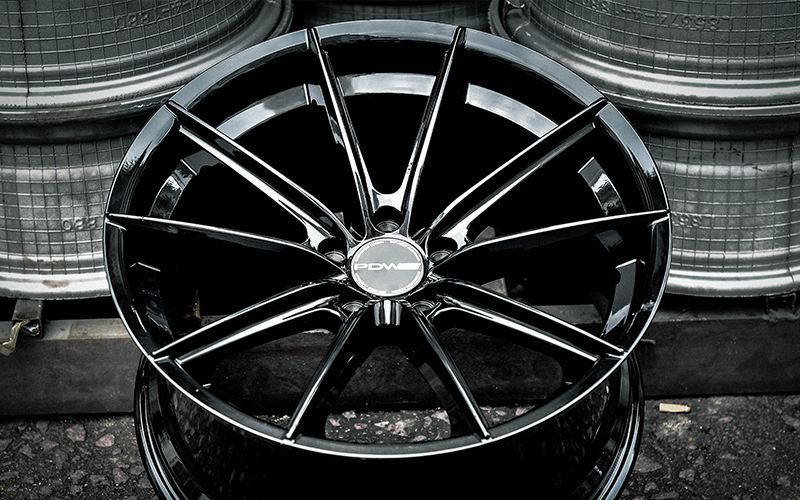Wheel shaking is a common issue that many drivers face when driving their vehicles. It can be a scary experience, as it can cause the driver to lose control of the car, which can lead to an accident. Wheel shaking can be caused by a variety of factors, such as uneven tire wear, worn-out suspension components, or a damaged wheel.
If a driver experiences wheel shaking, it is important to have their vehicle inspected by a mechanic as soon as possible. Ignoring the problem can lead to further damage to the vehicle, and can put the driver and passengers at risk. Additionally, if the shaking is caused by a damaged wheel, it can lead to a blowout, which can be extremely dangerous, especially at high speeds.

What Causes Wheel Shaking When Driving?
Worn or Damaged Tires
One of the most common causes of wheel shaking when driving is worn or damaged tires. When the tires are worn out or have uneven wear, they can cause the wheels to shake. The shaking can be felt in the steering wheel, and the car can feel unstable on the road. Additionally, if the tires are damaged, such as having bulges or cuts, this can also cause the wheels to shake.

Unbalanced Tires
Another cause of wheel shaking when driving is unbalanced tires. When the tires are not balanced correctly, it can cause the wheels to vibrate, which can be felt in the steering wheel. This can happen when the tires are rotated or replaced, and the balance is not checked.

Worn or Damaged Brake Rotors
Worn or damaged brake rotors can also cause wheel shaking when driving. When the rotors are worn out or have grooves, it can cause the brakes to grab and release, which can cause the wheels to shake. This is usually felt in the brake pedal, but it can also be felt in the steering wheel.

Loose or Worn Wheel Bearings
If the wheel bearings are loose or worn, it can cause the wheels to shake when driving. This can happen when the bearings are worn out or damaged, or if they were not installed correctly. The shaking can be felt in the steering wheel, and the car may feel like it is wobbling or swaying.
Misaligned Wheels
Misaligned wheels can also cause wheel shaking when driving. When the wheels are not aligned correctly, it can cause the tires to wear unevenly, which can cause the wheels to shake. The shaking can be felt in the steering wheel, and the car may pull to one side.
In conclusion, wheel shaking when driving can be caused by several factors, including worn or damaged tires, unbalanced tires, worn or damaged brake rotors, loose or worn wheel bearings, and misaligned wheels. It is important to have these issues addressed promptly to ensure safe driving.

How to Diagnose Wheel Shaking When Driving?
Wheel shaking when driving can be a frustrating and dangerous problem. It can be caused by a variety of issues, including worn tires, unbalanced wheels, or problems with the suspension. Here are some steps to diagnose wheel shaking when driving:
Visual Inspection
The first step in diagnosing wheel shaking is to perform a visual inspection of the tires and wheels. Look for signs of wear, such as uneven tread wear or bulges in the sidewall. Check the wheels for any signs of damage, such as cracks or bends. Make sure the lug nuts are tightened to the correct torque specification.

Test Drive
The next step is to take the vehicle for a test drive. Start by driving at a slow speed and gradually increasing to highway speeds. Pay attention to when the shaking occurs. If the shaking is felt at low speeds, it could be a problem with the tires or wheels. If the shaking occurs at high speeds, it could be a problem with the suspension.
During the test drive, try to isolate the shaking to a specific wheel. This can be done by turning the steering wheel slightly to one side or the other. If the shaking gets worse when turning in one direction, it could be a problem with the wheel bearing or suspension component on that side.
If the shaking is felt in the steering wheel, it could be a problem with the front suspension or steering components. If the shaking is felt in the seat or floor, it could be a problem with the rear suspension.
In conclusion, diagnosing wheel shaking when driving requires a visual inspection and a test drive. By following these steps, you can identify the source of the problem and take the necessary steps to fix it.

How to Fix Wheel Shaking When Driving?
If you experience wheel shaking when driving, it’s important to address the issue as soon as possible.
Not only is it uncomfortable, but it can also be dangerous. Here are some steps to take to fix wheel shaking when driving:
Replace Worn or Damaged Tires
Worn or damaged tires can cause wheel shaking when driving. Check your tires for any signs of wear, such as uneven tread wear or bulges. If you notice any damage or wear, it’s time to replace your tires.
Make sure to replace all four tires at the same time for optimal performance.

Balance Tires
If your tires are in good condition, but you still experience wheel shaking, it could be due to an imbalance in your tires. Take your car to a mechanic or tire shop to have your tires balanced. Balancing involves adding weights to your wheels to ensure they rotate evenly.
Replace Worn or Damaged Brake Rotors
Worn or damaged brake rotors can also cause wheel shaking when driving. If your brake rotors are warped or worn, they can cause your wheels to vibrate. Have your brake rotors inspected and replaced if necessary.

Replace Loose or Worn Wheel Bearings
Loose or worn wheel bearings can cause wheel shaking when driving. If your wheel bearings are loose or worn, they can cause your wheels to wobble or vibrate. Have your wheel bearings inspected and replaced if necessary.
Align Wheels
If your wheels are out of alignment, it can cause wheel shaking when driving. Misaligned wheels can cause uneven tire wear and affect the handling of your vehicle. Take your car to a mechanic to have your wheels aligned.
In conclusion, fixing wheel shaking when driving requires identifying the root cause of the problem and taking the appropriate steps to address it. By following these steps, you can ensure a safe and comfortable driving experience.

Preventative Maintenance
Regular preventative maintenance is key to preventing wheel shaking when driving. Proper maintenance of your vehicle’s tires, wheels, and brake system can help ensure a smooth and safe ride.
Regular Tire Rotation
Regular tire rotation is an essential part of preventative maintenance. It helps to ensure even wear on your tires and extends their lifespan. Rotating your tires every 5,000 to 7,000 miles can help prevent wheel shaking caused by uneven tire wear.
Regular Wheel Alignment
Regular wheel alignment is another important aspect of preventative maintenance. Proper alignment helps to ensure that your vehicle’s wheels are pointing in the right direction and that they are perpendicular to the ground. Misaligned wheels can cause uneven tire wear, which can lead to wheel shaking when driving. It is recommended to have your wheels aligned every 10,000 miles or if you notice any pulling or vibrating while driving.
Regular Brake System Inspection
Regular brake system inspection is crucial for maintaining a safe and smooth ride. A malfunctioning brake system can cause wheel shaking when driving, so it is important to have your brakes inspected regularly. Inspecting your brake system every 10,000 miles or if you notice any unusual noises or vibrations while braking can help prevent wheel shaking caused by faulty brakes.
In summary, regular preventative maintenance is essential to preventing wheel shaking when driving.
Regular tire rotation, wheel alignment, and brake system inspection can help ensure a smooth and safe ride.


